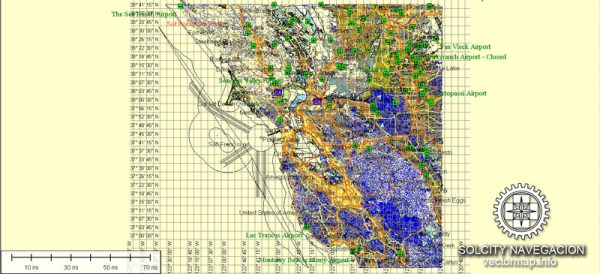The history of urban development in the San Francisco Bay Area, California, is marked by a series of significant events and trends that have shaped the region into the dynamic and diverse metropolitan area it is today. Here is an overview of the key historical aspects of urban development in the San Francisco Bay Area:
- Indigenous Peoples: Before European colonization, the San Francisco Bay Area was home to several indigenous tribes, including the Ohlone people. Their way of life was disrupted with the arrival of Spanish explorers in the 18th century, leading to the establishment of missions and the introduction of European diseases that had a devastating impact on the native population.
- Mexican and Spanish Periods: In the early 19th century, the region came under Mexican rule, and land grants were given to private individuals. Mexican landowners established ranchos, large landholdings that played a role in shaping the pattern of settlement in the area.
- California Gold Rush (1848-1855): The discovery of gold at Sutter’s Mill in 1848 brought a massive influx of people to the Bay Area. San Francisco, a small settlement at the time, quickly grew into a bustling port and the gateway to the goldfields. The population explosion led to rapid urbanization and the establishment of the city’s infrastructure.
- Transcontinental Railroad (1869): The completion of the First Transcontinental Railroad in 1869 connected the Bay Area to the rest of the country, facilitating the movement of goods and people and further contributing to the region’s growth.
- 1906 Earthquake and Fire: The devastating earthquake and subsequent fire in 1906 caused widespread destruction in San Francisco. However, the city quickly rebounded and embarked on a massive rebuilding effort that contributed to the development of modern urban planning and architecture.
- World War II and Industrialization: The Bay Area played a crucial role in the war effort during World War II, with shipyards and military bases boosting industrial development. The post-war period saw continued growth and the emergence of the Bay Area as a center for technology and innovation.
- Suburbanization and the Silicon Valley Boom: In the mid-20th century, suburbanization became a dominant trend as people moved away from urban centers. The emergence of Silicon Valley in the southern part of the Bay Area in the late 20th century further transformed the region into a global technology hub.
- Environmental Movements: The Bay Area has been at the forefront of environmental activism, with movements in the 1960s and 1970s leading to increased awareness and protection of the region’s natural resources, including the bay itself.
- Diversity and Cultural Development: The Bay Area has long been known for its cultural diversity, with various communities contributing to the region’s rich cultural tapestry. The Haight-Ashbury district in San Francisco gained fame during the 1960s as a center for the counterculture movement.
- Contemporary Challenges: Today, the Bay Area faces challenges related to housing affordability, transportation, and income inequality. The region continues to evolve as it grapples with the impacts of rapid technological advancements and the demands of a growing population.
Overall, the history of urban development in the San Francisco Bay Area reflects a complex interplay of economic, social, and cultural forces, with each era leaving its mark on the region’s physical and cultural landscape.


 Author: Kirill Shrayber, Ph.D.
Author: Kirill Shrayber, Ph.D.